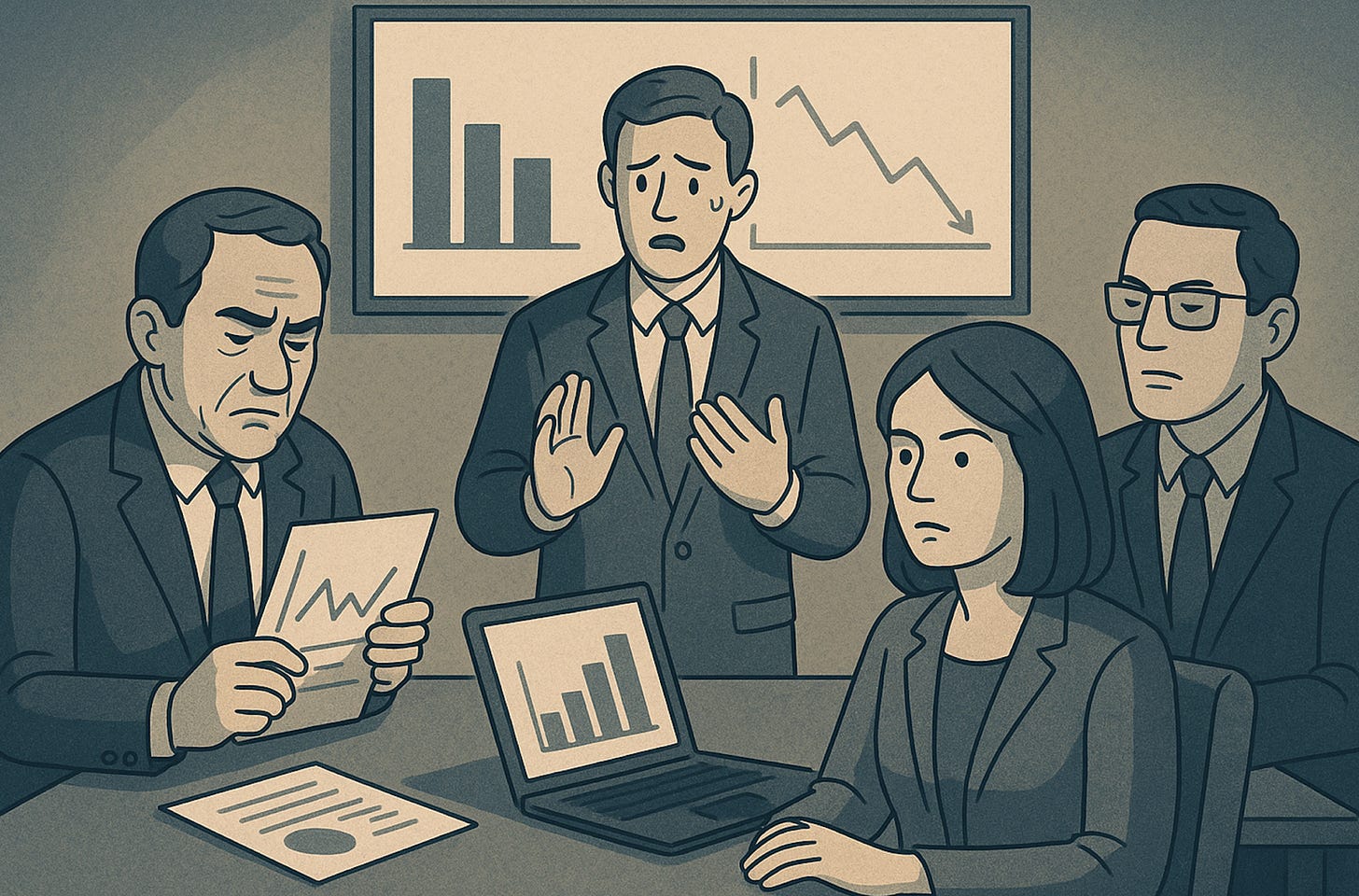ESC #4: What Emotional Blindness Looks Like in Practice
Part of the the Emotional Supply Chain Series
Series: The Emotional Supply Chain
ESC #1: Emotional Instrumentation Through Tooling & Evidence
ESC #2: The Missing Instrument
ESC #3: The Professionalization of Emotional Suppression
ESC #4: What Emotional Blindness Looks Like in Practice
ESC #5: Why This Matters Now (or, Trust as Emotional Infrastructure)
ESC #6: What You Have Been Missing (Evidence as Emotional Delivery)
ESC #7: The Realization You Have Already Felt
Emotional blindness is seldom announced by dramatic missteps; it is cultivated through a thousand routine habits that quietly narrow a leader’s perceptual field. Because these habits masquerade as efficiency or rigor, they evade scrutiny and eventually calcify into norms. The first task, therefore, is diagnostic: to hold up an unembellished mirror so professionals can recognize familiar behaviors not as neutral practices, but as artifacts of institutional affect-suppression.
Consider the cadence of a typical leadership meeting. A project manager’s voice wavers while describing a mounting delay, and the room responds with a quick pivot to burn-down charts and revised throughput estimates. The redirection feels disciplined, yet what actually occurred was affective deflection: the group displaced a palpable signal of anxiety by rushing to quantitative proxies. That reflex is the conditioned outcome of a culture that casts visible emotion as instability and equates composure with competence.
The same reflex governs written communication. Email and ticket threads proliferate precisely because asynchronous text compresses emotional bandwidth. Leaders who insist on “put it in writing” praise themselves for auditability, but the deeper reward is insulation from the face-to-face somatic cues (hesitation, relief, tension) that would otherwise demand relational engagement. In this flattened medium, disagreement appears as a rows-and-columns delta rather than as lived discomfort. The organization labels the exchange objective when, in reality, it has merely amputated the relational dimension.
Data absolutism completes the triad. When intuition surfaces (for example, an inexplicable unease about a vendor’s presentation, a subtle dissonance in a candidate interview), the sanctioned response is to request another dataset. Intuition is dismissed as bias rather than recognized as pre-conscious pattern recognition. The leader who overrides the feeling is applauded for rational discipline, unaware that the overridden signal often contained the earliest indicator of future trust failure. By the time a mismatch manifests in a stalled procurement cycle or a toxic hire, the originating intuition has been overwritten by a PDF trail of “due diligence.”
These micro-habits propagate through core business processes. In hiring, panels cling to competency matrices while explaining away collective discomfort as “not a culture fit,” never interrogating what the discomfort signified. In vendor selection, procurement teams rank suppliers on spreadsheet scores, though stakeholders silently downgrade a contender whose representatives seem evasive. Marketing drafts technically immaculate whitepapers that radiate distance and defensiveness; customers describe the documents as “unclear” and disengage. Even incident response valorizes affective flatness: the commander who speaks in monotone through a severity-one bridge is praised for calm, while team members quietly interpret the same monotone as indifference, throttling the upward flow of critical nuance.
The aggregate cost is measurable but rarely attributed. Communication designed to project control instead transmits chill; recipients sense the chill before they parse the content. When that somatic chill accumulates across artifacts (such as policy language, audit reports, roadmap briefs, etc.,), stakeholders hesitate before renewing contracts, auditors escalate minor findings, and talented staff drift toward cultures where their emotional telemetry is at least acknowledged. Leadership, reading only dashboard regressions, responds with more evidence, more precision, more control measures, reinforcing the spiral.
Trust failures thus arrive disguised as operational symptoms: a ghosted buyer, an unexpected churn spike, an anonymous exit-survey comment about feeling unheard. By the time these signals reach metrics, the emotional rupture is already historical. The post-mortem retrieves log data and root-cause diagrams, yet the primary cause (unregistered affect) remains invisible, destined to repeat. If this mirror feels uncomfortably personal, the discomfort is itself data. The intent is not to prescribe immediate empathy exercises or mandate expressive vulnerability, but to establish that emotion, far from being extraneous, is the substrate on which every trust judgment is rendered. An executive who cannot detect that substrate is operationally constrained, no matter how formidable their analytical apparatus. Recognition, not catharsis, is the objective. Once blindness is named, instrumentation can be upgraded. Until then, the organization will continue to submit impeccable documents while its stakeholders read the unmetabolized emotion between the lines and decide accordingly.


